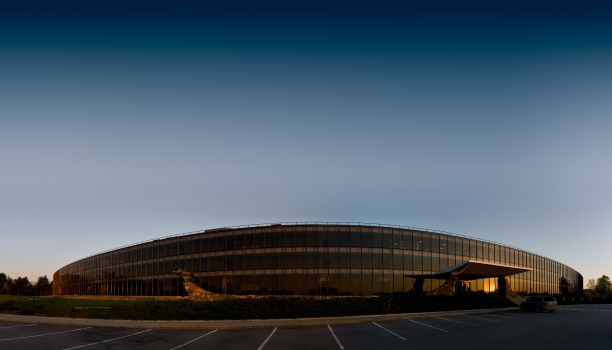General Information
Project Type
| Function / usage: |
Research building |
|---|
Location
| Location: |
Yorktown, Westchester County, New York, USA |
|---|---|
| Coordinates: | 41° 12' 38.07" N 73° 48' 12.37" W |
Technical Information
There currently is no technical data available.
Excerpt from Wikipedia
The Thomas J. Watson Research Center is the headquarters for IBM Research. The center comprises two sites, with its main laboratory in Yorktown Heights, New York, U.S., 38 miles (61 km) north of New York City and with offices in Cambridge, Massachusetts.
Overview
The center, headquarters of IBM's Research division, is named for both Thomas J. Watson, Sr. and Thomas Watson, Jr., who led IBM as president and CEO, respectively, from 1915 (when it was known as the Computing-Tabulating-Recording Company) to 1971.
The research is intended to improve hardware (physical sciences and semiconductors research), services (business modelling, consulting, and operations research), software (programming languages, security, speech recognition, data management, and collaboration tools), and systems (operating systems and server design), as well as to extend the mathematics and science that support the information technology industry.
The center was founded at Columbia University in 1945 as the Watson Scientific Computing Laboratory, on 116th Street in Manhattan, expanding to 115th Street in 1953. More labs were later opened in Westchester County, New York beginning in the late 1950s with the temporary facility and research headquarters at the former Robert S. Lamb estate in Croton-on-Hudson, New York, with others in Yorktown Heights, and downtown Ossining. The new headquarters were finally located with a new lab in Yorktown Heights designed by architect Eero Saarinen completed in 1961, with the 115th Street site closing in 1970. IBM later donated the New York City buildings to Columbia University; they are now known as the Casa Hispanica and Watson Hall. The lab expanded to Hawthorne in 1984.
Notable staff have included the mathematicians Benoît Mandelbrot, Ralph E. Gomory, Shmuel Winograd, Alan Hoffman, Don Coppersmith, Gregory Chaitin, the inventor Robert Dennard, roboticist Matthew T. Mason, author Clifford A. Pickover, computer scientists Frances E. Allen, John Cocke, Stuart Feldman, Ken Iverson, Irene Greif, and Mark N. Wegman, Barry Appelman, Wietse Venema, the 1990 Economics Nobel Prize winner, Harry Markowitz, and physicists Llewellyn Thomas, Rolf Landauer, Charles H. Bennett, Elliott H. Lieb, J. B. Gunn, Leroy Chang, 1973 Physics Nobel Prize winner, Leo Esaki, Jay Gambetta, Uri Sivan, President of the Technion – Israel Institute of Technology, and Zvi Galil, President of Tel Aviv University.
The work done at the Center from 1960–1984 was named an IEEE Milestone in 2009.
Supercomputers
As of November 2010, the center houses three TOP500 supercomputers; the oldest and still fastest of which, a BlueGene/L system designed for protein folding simulations, called BGW (Blue Gene Watson), entered the list in the 06/2005 issue, then positioned second behind fellow Blue Gene/L in LLNL.
Another well-known installation is Watson, an artificial intelligence system capable of answering natural language questions, which won several Jeopardy! games against human contestants in February 2011 on the site.
Building in Yorktown Heights
The Yorktown Heights building, housing the headquarters of IBM Research, is situated on private land not generally accessible to the public, is a large crescent-shaped structure consisting of three levels with 40 aisles each, radiating out from the center of the circle described as the crescent. Due to this construction, none of the offices have windows. The lowest level is partially underground in some areas toward the shorter side of the crescent, which also leads to the employee parking lots. A large overhang protrudes from the front entryway of the building, and faces the visitor parking lot. The building houses a library, an auditorium and a cafeteria. It was designed by the architect Eero Saarinen and built in 1956–1961.
Text imported from Wikipedia article "Thomas J. Watson Research Center" and modified on 01 September 2020 according to the CC-BY-SA 3.0 license.
Participants
- Eero Saarinen (architect)
Relevant Web Sites
Relevant Publications
- (2009): Saarinen. Taschen, Cologne (Germany), ISBN 978-3-8365-1330-2, pp. 68-71.
- About this
data sheet - Structure-ID
20058100 - Published on:
24/08/2010 - Last updated on:
25/08/2020





